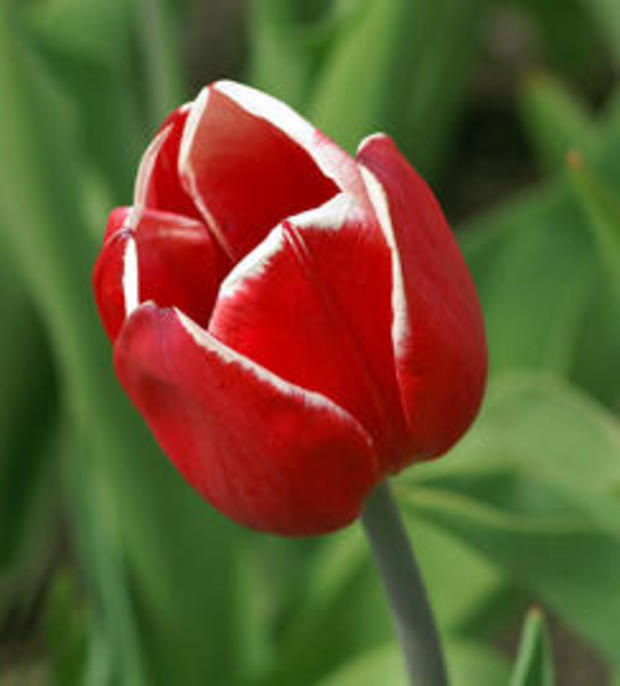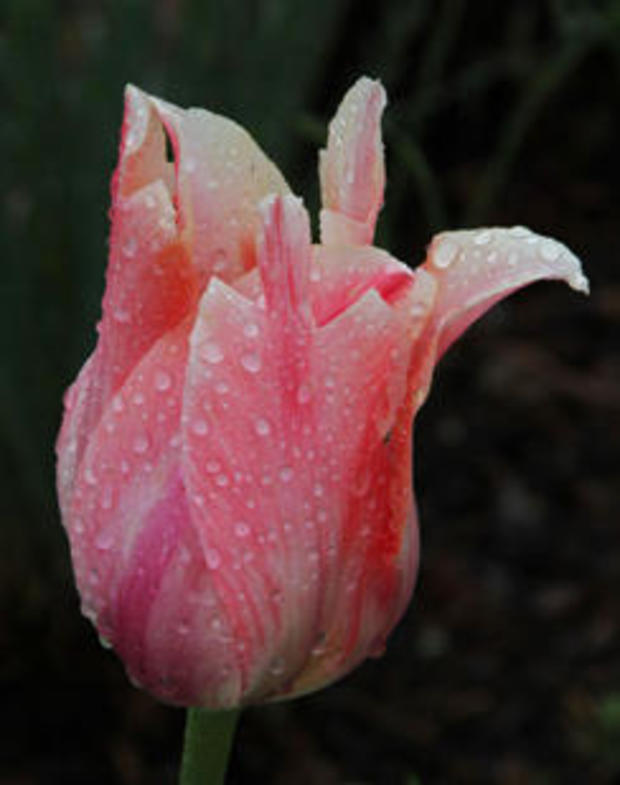Nature up close: Tulips
By "Sunday Morning" contributing videographer Judy Lehmberg.
All flower petals are modified leaves. Leaves contain chlorophyll and accessory pigments to enable them to carry on photosynthesis. As flower petals evolved most of them lost their chlorophyll but retained some of the accessory pigments that included the colors we see in flower petals today.
When a flower is a developing bud it is surrounded by several green leaf-like structures called sepals. Think of the green things surrounding a rose bud. Some plants, including tulips, have sepals that look just like their petals.
The typical tulip has three petals and three sepals which all look like petals. The evolutionary advantage of sepals matching petals is there is more to attract pollinators. To know which is which, just look at the three that are attached the lowest -- those are the sepals.
Tulips didn't originate in Holland. They are native to Eurasia and North Africa. The tulips now found in Holland were brought there from the Ottoman Empire (present-day Turkey) sometime in the late 16th century. From the beginning of their introduction to Holland the Dutch fell in love with tulips; their colors were more intense and varied than any flowers already in the Netherlands.
By the 1630s, tulip prices rose to unbelievable heights. In February 1637, 99 bulbs were sold at auction for 90,000 guilders. Compare that to the 1,600 guilders Rembrandt received for "The Night Watch" he painted several years later, and we begin to appreciate how inflated tulip prices had become.
A major factor in their elevated prices, as well as the crash of the tulip market, was a virus. No one knew viruses existed in the 1700s. In fact they weren't discovered until 1892, and they weren't ven seen until the 1930s (thanks to electron microscopes). A virus that infects tulips, the Tulip Breaking Virus, causes them to become multicolored, but does not immediately kill them. It does weaken the plant over time and they eventually die, but that can take several generations. Tulip Breaking Virus was so named because it causes the color of a tulip to split, or break, with a lighter color appearing between the breaks.
These variegated or broken tulips were highly desirable and led to the inflated prices. The problem was the broken tulips could not reproduce over long periods of time, therefore they became more and more rare, driving prices and demand up as their population declined, resulting in the eventual price crash.
Today multicolored tulips still exist, but the vast majority are a result of genetic variation, not a viral disease.
If you would like to visit the most prolific tulip displays, the Keukenhof garden south of Haarlem in the Netherlands is absolutely stunning in the spring. They have a huge number and variety of tulips as well as many other flower species.
The garden is open from late March to mid-May, and so will reopen next Spring.
Judy Lehmberg is a former college biology teacher who now shoots nature videos.
For more info:
- Judy Lehmberg (Official site)
- Judy Lehmberg's YouTube Channel
To watch extended "Sunday Morning" Nature videos click here!






